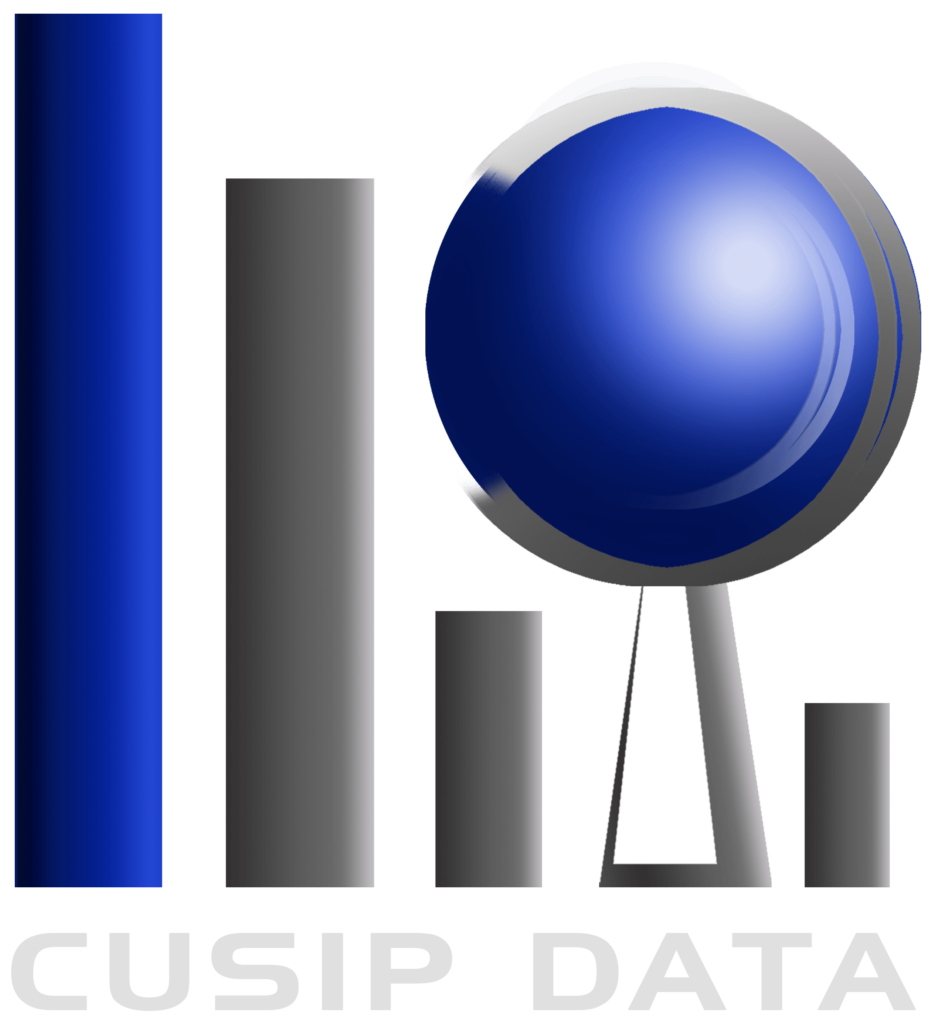- HOME
- About us
- Services
- COVID-19 and CUSIP Codes: Impacts on Mortgage Loan Securities Markets
- The Significance of CUSIP Numbers in Mortgage-Backed Securities Trading
- CUSIP Codes and Consumer Protection in Mortgage Lending
- CUSIP Codes and ESG Factors in Mortgage Loan Investments
- CUSIP Codes and Loan Pools: Maximizing Value in Mortgage Loan Sales
- CUSIP Codes and Mortgage Loan Origination: What Homebuyers Should Ask
- CUSIP Codes and Risk Management in Mortgage Loan Portfolios
- CUSIP vs. Ticker Symbols: Key Differences in Mortgage Loan Securities
- Emerging Trends in CUSIP Use within Mortgage Loan Securities
- How CUSIP Codes Affect Mortgage Loan Transparency for Homebuyers
- How CUSIP Codes Help Investors Navigate Mortgage-Backed Securities
- How CUSIP Numbers Can Help Consumers Understand Mortgage Loan Risks
- How CUSIP Numbers Facilitate Mortgage Loan Due Diligence for Sellers
- Legal and Regulatory Aspects of CUSIP Codes in Mortgage Loan Sales
- Liquidity Enhancement: CUSIP Codes in the Mortgage Loan Sales Process
- Streamlining Mortgage Loan Sales with CUSIP Number Integration
- The Evolution of CUSIP Codes in Mortgage-Backed Securities Markets
- The Future of CUSIP Codes: Innovations in Mortgage Loan Markets
- The Impact of CUSIP Standardization on Mortgage Loan Securities
- The Importance of CUSIP Codes in Selling Mortgage Loans
- The Role of CUSIP Codes in Mortgage Loan Documentation for Borrowers
- The Role of CUSIP Codes in Mortgage Loan Securitization
- The Role of CUSIP Codes in Mortgage-Backed Securities
- Transparency and CUSIP Codes in the Secondary Mortgage Loan Market
- Understanding CUSIP Codes: A Primer for Mortgage Loan Securities
- Using CUSIP Codes to Track and Manage Mortgage Loan Information
- Using CUSIP Data to Evaluate Mortgage Loan Pricing Strategies
- What Consumers Should Know About CUSIP Numbers in Mortgage Loans
- CUSIP & Securitization of Mortgage Loans – A Journey into Financial Clarity
- The Essential Interplay between CUSIP & Securitization of Mortgage Loans
- CUSIP & Securitization of Mortgage Loans – Structuring a Transparent Market Landscape
- The Synchrony of CUSIP & Auto Loan Securitization speeds up Finance
- The alignment of “CUSIP & Securitization of Auto Loans” evolves the realm of finance
- The Synergistic Integration of CUSIP & Auto Loan Securitization
- Analyzing CUSIP and Securitization of Credit Card Loans
- CUSIP Numbers and Asset Allocation Strategies
- The Global Reach of CUSIP Numbers
- How Corporate Actions lead to changes of CUSIP Number
- Protect CUSIP Numbers for Security and Fraud Prevention
- CUSIP Data: Key Insights for Mortgage Loan Investors
- The Role of CUSIP Numbers in Regulatory Compliance
- The Importance of CUSIP Code in Risk Management
- CUSIP and Mortgage Loans: Standardization in a Complex Financial Landscape
- CUSIP Data: Important approach to Mortgage Loan Investors
- Mortgage Loan Investor’s Guide: Essential Insights into CUSIP Data
- CUSIP and Securitization of Credit Card Loans: Navigating the Financial Matrix
- CUSIP Numbers in Mutual Funds and ETFs: A profound search into Fund Identification and Management
- CUSIP & Securitization of Auto Loans: Driving the Financial Future
- A Deep Dive into the Power of CUSIP Data in Risk Management
- The CUSIP Advantage of Navigating the Auto Loan Securitization Maze
- Mortgage-Backed Securities and CUSIP Codes: A Harmonious set of two
- Mastering CUSIP Codes: Tips and Tricks for Financial Professionals
- Fine-Tuning Your Auto Loan Investment Strategy with CUSIP Intelligence
- Blog
- FAQ
- Contact Us
A Deep Dive into the Power of CUSIP Data in Risk Management


Introduction
Risk management in the field of finance is fundamental. As financial markets evolve, intertwined in their complexity, and global economies become increasingly interconnected, the importance of effective tools to manage risk cannot be understated. In the intricate mosaic of risk management tools, the CUSIP system has emerged as a surprisingly potent piece. For those uninitiated, CUSIP stands for Committee on Uniform Security Identification Procedures. It’s a nine-character alphanumeric code assigned to securities in North America, ensuring a unique identity for each one. But its value transcends mere identification. In the context of risk management, CUSIP data, often overlooked, emerges as a linchpin, offering insights, clarity, and a layer of safety in the often tumultuous financial seas.
In the ever-evolving landscape of finance, CUSIP data in risk management stands as an indispensable pillar of stability and success. The ability to identify, assess, and mitigate risks is crucial for investors, financial institutions, and regulators alike. In this article, we embark on a deep dive into the formidable world of risk management and the pivotal role played by CUSIP data.
The Foundation of Risk Management
Underpinning effective risk management is the need for accurate and comprehensive data. CUSIP codes offer precisely that. They act as unique identifiers for financial instruments, allowing for the precise tracking of each security’s characteristics, history, and performance.
When assessing risk, investors and institutions rely on CUSIP data to gain insights into various aspects of an investment, including its historical price movements, credit ratings, and issuer information. This data empowers them to make informed decisions, from asset allocation to portfolio diversification.
Unraveling the Complex Web
The financial market is akin to a vast web, where securities, derivatives, and financial instruments of all kinds are interconnected. In this intricate network, even minor changes in one security can cascade across the system, affecting various other instruments. The CUSIP data in risk management in its essence, helps untangle this web. By providing a distinct identifier for each security, it becomes feasible for financial analysts and risk managers to track the movement and performance of each instrument independently. This tracking capability is foundational, enabling professionals to discern patterns, correlations, and potential risks lurking in their portfolios.
Predictive Analysis and Proactive Measures
Modern risk management doesn’t just about understand present risks—it’s about forecasting future ones. Here, CUSIP data in risk management shines brightly. With a clear identification system, coupled with historical data, analysts can deploy predictive models more effectively. By analyzing how particular securities have behaved in the past under specific market conditions, using their CUSIP identifiers for precision, experts can make educated predictions about future behavior. This proactive approach, fueled by accurate CUSIP data, allows institutions to anticipate market shifts and adjust their strategies accordingly, safeguarding assets and optimizing returns.






Enhanced Portfolio Diversification
One of the foundational strategies in risk management is portfolio diversification—spreading investments across various instruments to mitigate potential losses. CUSIP data plays a pivotal role in this
- Accurate Allocation: By using CUSIP identifiers, investment managers can ensure that assets are spread across diverse securities, avoiding unintended overlaps.
- Performance Tracking: With CUSIP, the performance of each security within a diversified portfolio can be tracked accurately, offering insights into which assets are yielding the best returns.
- Informed Rebalancing: As markets evolve, portfolios need rebalancing. CUSIP data ensures that this rebalancing is based on precise performance metrics.
- Risk-Reward Analysis: Using CUSIP data, managers can evaluate the risk-reward ratio of their diversified portfolio, making necessary adjustments to align with their financial goals.
Empowering Risk Assessment
The first step in effective CUSIP data in risk management is risk assessment, and this is where CUSIP data truly shines. Here’s how:
- Granular Identification: CUSIP codes provide a granular level of identification for each security, enabling investors to distinguish between seemingly similar instruments. This granularity is vital for risk differentiation.
- Historical Analysis: CUSIP data allows for the analysis of historical performance, offering insights into how a security has weathered different market conditions. This historical context is invaluable for assessing its potential future risks.
- Issuer Information: CUSIP codes also include information about the issuer, helping investors gauge the financial health and stability of the entity behind the security.
- Portfolio-Level Risk: On a portfolio level, CUSIP data in risk management aids in assessing overall risk exposure. By categorizing and tracking holdings based on CUSIP codes, investors can determine if their portfolio is adequately diversified across asset classes, reducing concentration risk.
Conclusion
In the grand orchestra of finance, every instrument, no matter how subdued, plays a critical role. The CUSIP system, while not always in the limelight, is a testament to this fact. Its seemingly simple function of providing unique identifiers belies its profound impact on risk management.
As we’ve explored, CUSIP data is instrumental in simplifying the complex web of securities, enabling predictive analysis, and enhancing portfolio diversification strategies. But beyond these tangible benefits, it represents something even more significant: the financial industry’s commitment to clarity, accuracy, and proactive risk management.
In a world where market dynamics shift rapidly, sometimes with little warning, tools like the CUSIP system become invaluable. They act as the lighthouses, guiding institutions through turbulent waters, ensuring that risks are not just managed, but anticipated, understood, and turned into opportunities.
In conclusion, as we navigate the ever-evolving financial landscape, the power of tools like CUSIP becomes undeniably evident. They underscore the industry’s resilience, adaptability, and unyielding commitment to safeguarding assets while ensuring growth. For any financial professional or institution, understanding and leveraging the power of CUSIP data in risk management is not just advisable; it’s urgent.
Winding up
In a world where financial markets are shaped by uncertainty and volatility, CUSIP data remains a steadfast ally in the pursuit of financial stability and success. It empowers stakeholders to navigate the complex labyrinth of risk with precision and confidence, ensuring that they are well-equipped to face whatever challenges the financial landscape may present. With the future unfolds, the importance of CUSIP data in risk management is set to grow, proving once again that behind every code lays the power to transform and safeguard the world of finance.
At Cusipdata.com it is our earnest endeavor to facilitate your journey in navigating the CUSIP data in risk management with confidence and informed precision, contributing to the collective resilience and sustainable growth of financial ecosystem.
